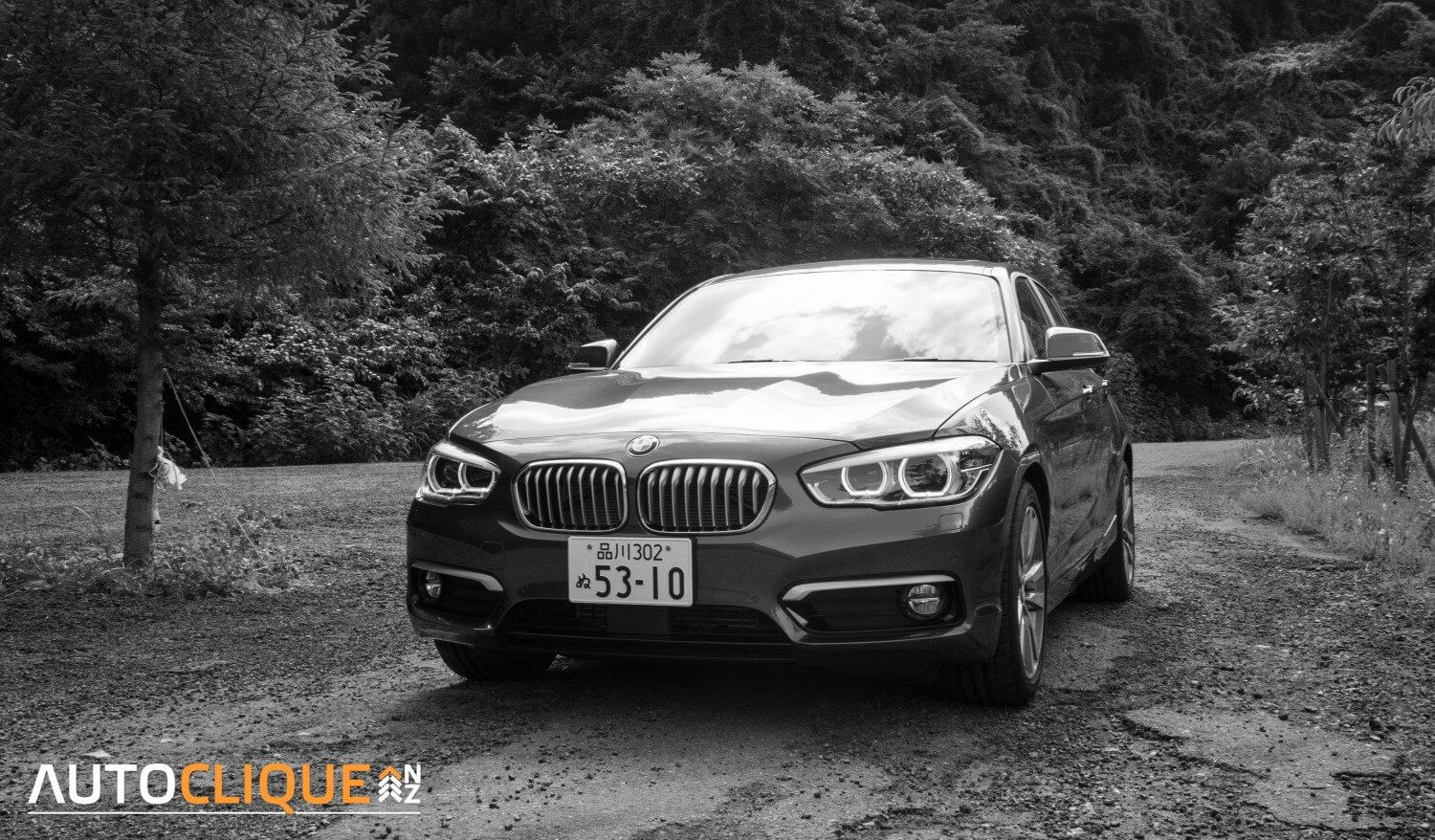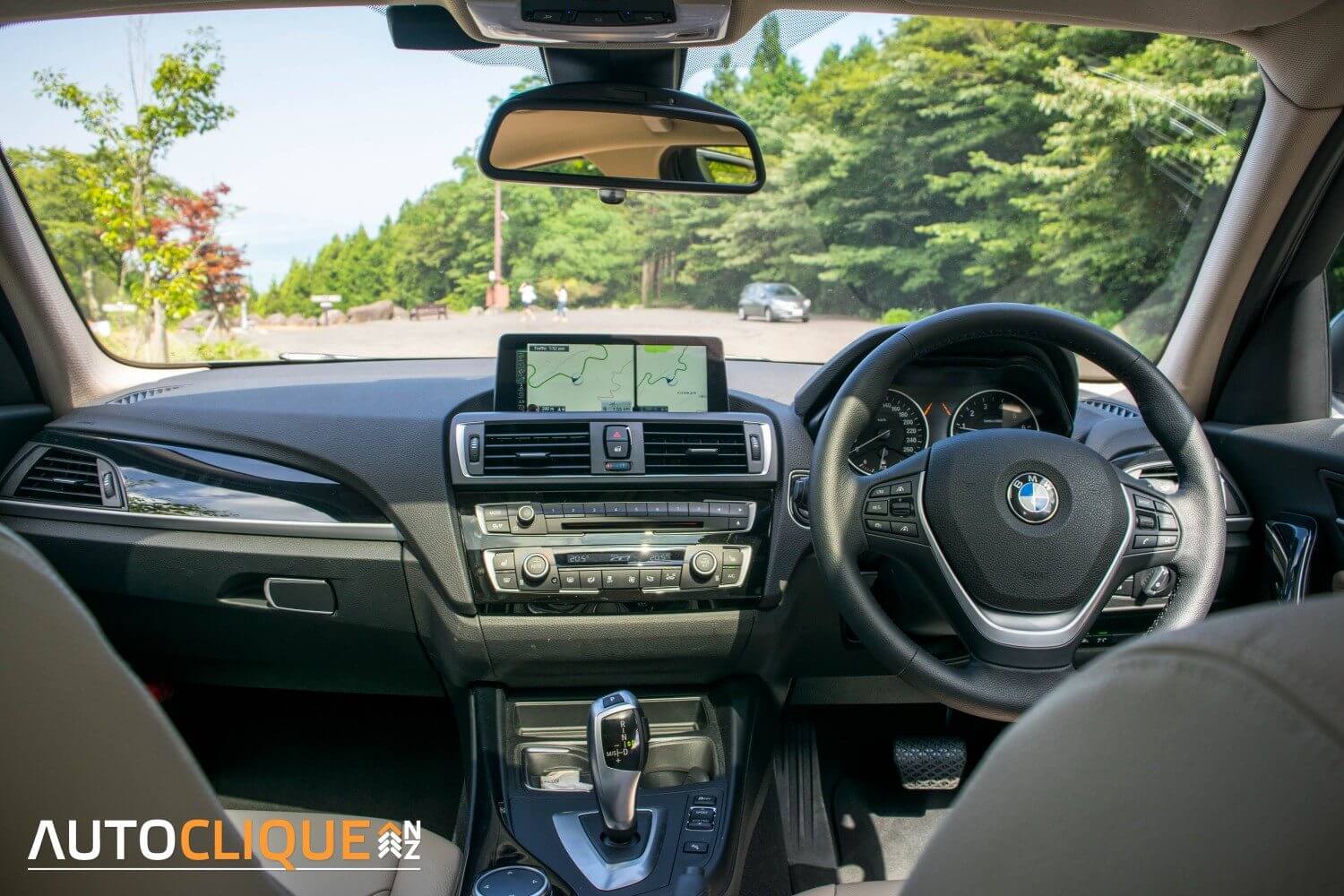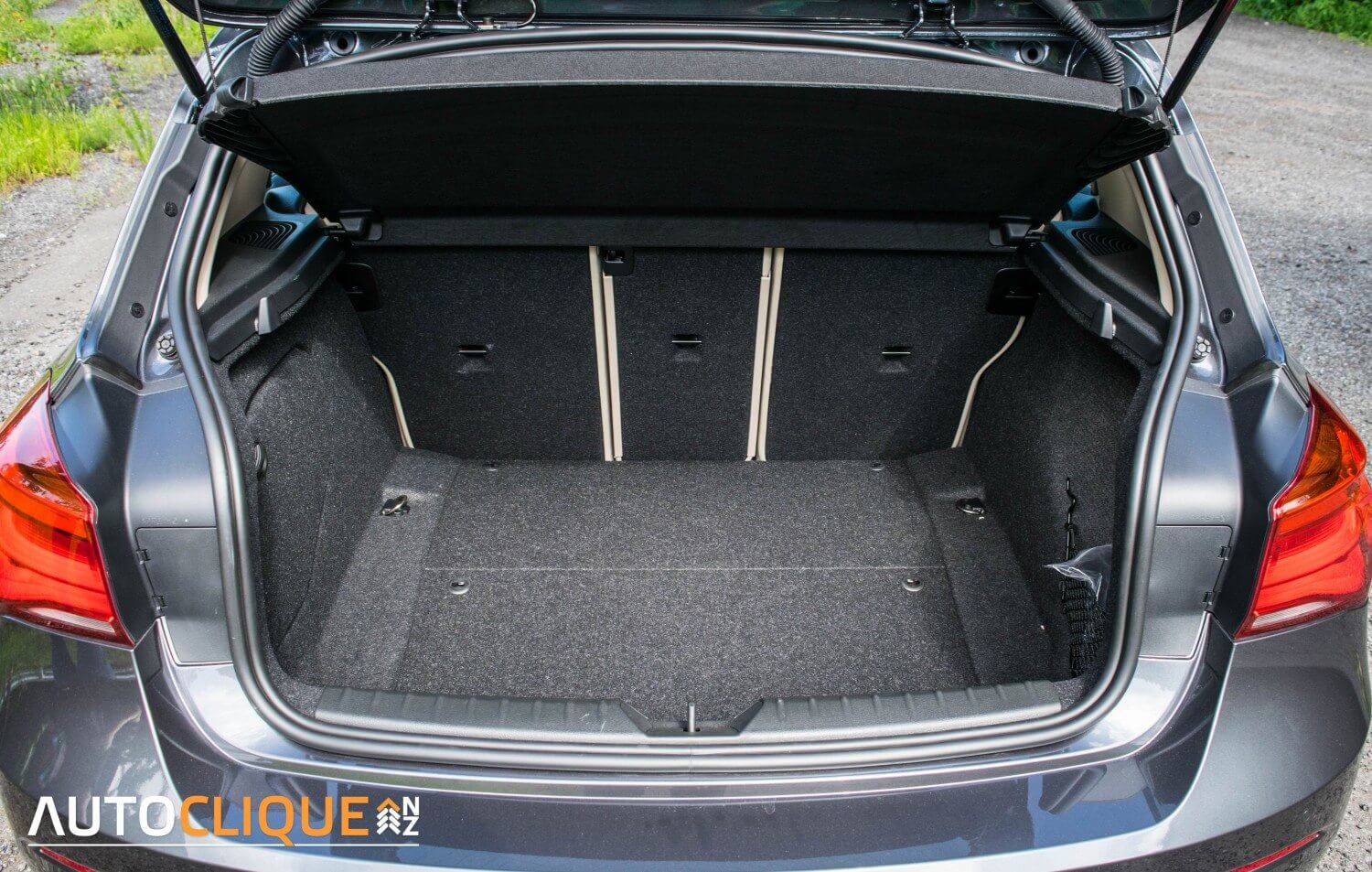In the olden days, buying an entry-level German car meant you were clinging on to the bottom rung of the premium ladder. Nothing was quite as sad or desperate as seeing halogen headlights and a ‘1.6’ badge on the back of a supposedly premium car. But now, that’s no longer the case.
Recently big names that were once only associated with posh luxury sedans have branched out to the lower end of the market to entice a new, younger breed of customers. Audi, BMW, and Mercedes now offer ‘entry level’ hatchbacks to bring in these cashed-up youngsters to their brands.
Brand loyalty, whether you’re into it or not, is alive and well. The first impression you get from a brand is important in how you perceive them. The moment you first use one of their products is when you’ll decide if you like the brand or not. That’s why ever since 2005, when I got my first iPod, I’ve stuck with Apple.
So, I put myself in the shoes of a entry-level executive who’s just bought his first BMW. What’s life like with a car that’s supposed to lure first time BMW buyers into the brand and will it make them stay? Having driven both the new Audi A3 and new Mercedes A-Class, the 1-Series had a benchmark to beat.
Okay, so Audi has had an A3 since 1996, the A-Class Merc came out in 1997, and BMW’s 1-Series first debuted in 2005. But the competition only started to gain momentum a couple years ago when Mercedes finally took things seriously and turned the A-Class into a normal looking hatchback.
The Design
For BMW, the 1-Series was always going to be a hit. Who wouldn’t want a small, affordable BMW? The problem was some didn’t really fancy the styling. I didn’t mind the first generation’s design, but come the second-gen and it went a bit wrong. As one poetic soul once said, “it looks like the pig from Angry Birds”.
It couldn’t have happened at a worse time as the A-Class and A3 were in their newer and prettier generations. BMW had to do something and earlier this year they responded by treating their baby to a much needed facelift. The nip and tuck has brought the 1-Series in line with its bigger siblings and now looks the part.
When you walk up to it, especially in an underground car park, it looks and feels every bit as premium as its bigger and more expensive siblings. Without the sporty M-Pack, the 1-Series looks rather businesslike. Some aren’t fully convinced by the styling but a BMW isn’t supposed to be admired from the outside. After all, these are the ‘Ultimate Driving Machine’.
The Drive
With a small capacity 1.6-litre four-cylinder turbocharged engine, the 120i felt like it was ideal for most real world situations. Like in New Zealand, the base 1-Series is the 118i. While the range-topping M135i with 306bhp might be more up my alley, I do realise most people don’t need a car that’ll get from 0-100 km/h in 4.5 seconds. In between the two is the 120i (New Zealand gets the more powerful 125i to fill the gap).With 177bhp/130kW and 250NM, the 120i can get from 0-100 km/h in 7.2 seconds while returning a claimed 6.9L/100km. For most people, the mid-level 120i will the sweet spot for the entry-level BMW.
It never felt slow but didn’t feel electrifying either. A touch on the fast pedal and the 120i did respond with the gusto of a sportier car but would never set your pants on fire. Like most cars these days, the 1-Series has a selectable drive mode. The 120i had four settings; Comfort, Eco, Sport, and Sport+. These driver settings adjust the engine and transmission for optimal performance in each respective mode.
In Eco the acceleration responses are dialled back to improve economy. Comfort was the default setting where everything was just set for day to day driving. I like how BMW refrained from calling it ‘Normal’ mode, because who wants to be normal?
As the name suggests, Sport mode is for that ultimate driving experience that everyone who drives BMWs keep harping on about. I have to admit, there was quite a change in responses while in Sport mode. The acceleration becomes more instant and while this isn’t a fire breathing hot rod, it did perform surprisingly well for a little 1.6-litre. Turbo engines have come a long way in recent years and BMW’s are certainly the best out there.
Compared to the Renault-sourced turbo engines Mercedes use, these BMW ones are more refined, more responsive, and make a better noise. Okay, so this mid-range car was never going to be as symphonic as a M5 or the award-winning M135i but for what it is, it’s pretty damn good. It should make your commute to and from work a little bit more exciting.
But if we’re going to talk about praise then we have to talk about the 8-speed ZF automatic. I had seen other reviews praising this gearbox, some even claiming it was better than a dual-clutch system. You know what, they’re right. I preferred it to a dual-clutch transmission as you got the lightning quick shifts without the low-speed jerkiness you sometimes get with DCTs. Lightning-fast gearshifts may not sound like the most important thing in the world, but every millisecond counts. As those business-types like to say, time is money.
So far it all seems to be roses and butter biscuits, and to be honest it was. The 1-Series really did impress me, a lifelong Mercedes fan. But if I were to nitpick I’d say it wasn’t the ‘Ultimate Driving Machine’ I was hoping for. Yes the engine and the gearbox were great. The chassis was impressive too. Being the only rear-wheel drive car in its class certainly gave it an advantage over the A3 and A-Class. I also liked how the battery was placed under the boot for better weight distribution. But unfortunately the electrically-assisted steering let it down.
It wasn’t the worst electric steering I’ve come across but the way it weights up at higher speeds and in sport mode then becomes lighter at low speeds made it feel all too artificial. I would’ve liked a more natural transition, especially from a BMW. It was helpful to be able to steer the car around car parks with one finger but it didn’t translate well when you’re blasting up one of the best roads in Japan where it still felt light.
Which was shame as the chassis was composed and competent. Even though this was a rear-biased car, the back never tried to let out. Even in Sport+ mode which turns off ESC it never felt like it’d lose control. It always felt planted and I hate to keep banging on about it but the feeling of being pushed through corners rather than being pulled was a real delight.
The Comfort
On the smooth, though confusing, Japanese motorway roads the 1-Series felt like a more grown-up car. It cruised up and down the seemingly endless tarmac with ease. NVH levels were kept low, wind and engine noise were especially muted. Road noise did make its way into the cabin but it was never too intrusive.
Like most German cars, the ride was a tad on the firm side. It may have something to do with the smooth roads they have in Germany. On the smoother roads in Japan the 1-Series felt comfortable enough. However, on the rougher roads you could certainly feel the surfaces underneath you. That’s not a problem for me personally, but some might find it firmer than say a Lexus.
Taking it out of the open roads and into some city traffic, the 1-Series was a fine place to be in. The light low-speed steering means less work and stress for zig-zagging through city roads. Visibility all around was good while it has one of the best rear-view camera/parking sensors system fitted to any car. The array of driver aids help make life a little bit easier. There’s Lane Control Warning, Blind Spot Warning, pre-collision braking, and radar-guided cruise control that will bring the the car to a complete stop.
The Interior
Inside it’s very typically German. It’s not the most interesting of interiors but it is hard to fault the ergonomics and the quality. Everything feels like it’ll last forever. Sure, it’s not quite as special to sit in as say a Mini but it is also less distracting for the driver.
Everything was where it should be and this new generation iDrive system is hands-down one of the best factory infotainment systems on the market right now. And for any foreigner living in Japan who finds Japanese sat-nav systems confusing, get one of these just for the navigation system. It’s brilliant.
The 11-inch high-resolution screen with a 16:9 ratio was crisp and clear. I particularly liked the split-screen function. But what really won me over were the level of assistance the sat-nav gave. Japan’s motorway network is a confusing noodle of tarmac. It’s a bit like that pair of tangled earphones you have in your pocket. BMW’s navigation system somehow managed to simplify it in a very German way. It’ll tell you which lanes you should be in at the appropriate time, unlike most sat-nav systems that give instructions far too late.
If you do cock up, which will happen, it’ll correct your human error and direct you to the best route instantly. In fact, the whole system has got some pretty fast reactions. Going through menus on the iDrive system was seamless with little to no lag at all. BMW know their target market have the latest tech so there’s no excuse that their cars shouldn’t too.
The iDrive was definitely my highlight of the interior. And as it’s pretty much used throughout the entire BMW range, once you’ve experienced it in the 1-Series and have gotten used to the ins and outs of it, there’ll be one less thing to learn once you step up to a bigger BMW model.
What you won’t have to relearn as the space inside. It might be the smallest car in the BMW range but it’ll easily fit four junior executives/people and some. Five might be a squeeze but for those late night after work trips to a downtown bar, it should do the job. The boot was a good size, at 360L it’s identical to the A-Class. There’s no underfloor storage, as the battery was housed there, but the rear-seats do fold down flat with a 60:40 split to increase volume space.
What it’s up against
| Brand/Model | Engine | Power | Fuel L/100km | CO2 g/km | 0-100 km/h | Price – High to Low |
| Audi A3 Sportback 1.8 TFSI | 1.8-litre, four-cylinder turbo petrol | 180bhp/132kW | 5.6L/100km | 130g/km | 7.3 sec |
NZ$56,900 |
| Mercedes-Benz A200 | 1.6-litre, four-cylinder turbo petrol | 156bhp/115kW | 6.1L/100km | 141g/km | 8.3 sec |
NZ$54,990 |
| BMW 120i | 1.6-litre, four-cylinder turbo petrol | 177bhp/130kW | 5.9/100km | 165g/km | 7.2 sec |
¥3,970,000 (approx. $52,933) |
| Volvo V40 T4 | 2.0-litre, five-cylinder turbo petrol | 180bhp/132kW | 7.5L/100km | 174g/km | 7.9 sec |
NZ$52,990 |
| Lexus CT200h | 1.8-litre, four-cylinder hybrid-petrol | 136bhp/100kW | 4.1L/100km | 94g/km | 10.3 sec |
NZ$49,995 |
What do we think?
| Pros | Cons |
| Peppy engine | Ride might be too firm for some |
| Brilliant 8-speed auto | Options list can bring price up |
| Rear-wheel drive chassis | 125i seems like a better mid-range version |
| Comes with some great tech features, especially the new iDrive | |
| Better brand ambassador than rivals | |
As an introduction to the BMW brand, the 1-Series does a fine job of condensing all the things BMW is known for into a small and *relatively* affordable package. The mid-range 120i is a compelling package offering the compromise in price, performance, and economy. Optioned right it’s not much more than more mainstream alternatives.
When compared to its premium rivals, the 1-Series’ rear-wheel drive chassis, faultless auto, and enthusiastic engines give it an edge. The A-Class may arguably have a prettier exterior and the A3 a better interior, but as an overall package the 1-Series would be my pick. It’s also a better representation of the brand than its rivals. Not only would it be ideal for first-time BMW buyers but it’d also appeal to BMW owners looking to downsize.
| Vehicle Type |
Premium hatchback |
| Starting Price |
¥3,970,000 (approx. $52,933) |
| Tested Price |
¥4,875,000 (approx. $65,000) |
| Engine |
1598cc four-cylinder DOHC turbocharged petrol |
| Transmission |
8-speed automatic |
| 0-100 kph |
7.2 seconds |
| Kerb Weight |
1335kg |
| Length x Width x Height |
4340 x 1765mm x 1440mm |
| Cargo Capacity |
360L |
| Fuel Tank |
52L |
| ANCAP Safety Ratings |
5 Star |




























































